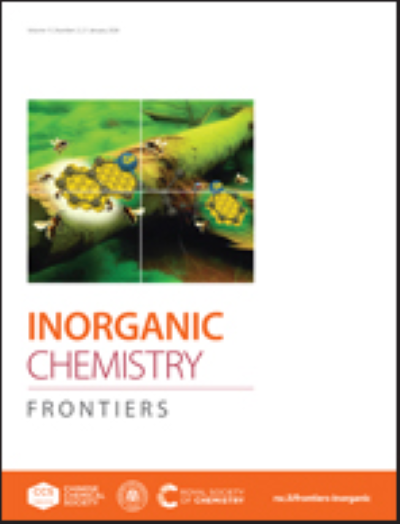Construction of floatable copper/corncob biochar composite with LSPR effect for CO2 capture and efficient photo-thermal catalytic conversion
IF 6.4
1区 化学
Q1 CHEMISTRY, INORGANIC & NUCLEAR
引用次数: 0
Abstract
The synthesis of high-value chemicals through photothermal reduction of carbon dioxide is of great significance for addressing the energy shortages and environmen-tal challenges, however the poor heating effect of powder catalysts results in low CO2 reduction efficiency. Herein, a Cu/corncob biochar honeycomb composite was synthesized using a facile impregnation/calcination method. The corncob biochar exhibited a honeycomb morphology with high specific surface area and abundant adsorption sites due to its porous surface structure. The localized heating and the generation of high-energy hot electrons were facilitated by the localized surface plasmon resonance (LSPR) induced by Cu nanoparticles. Consequently, the photo-thermal catalytic reduction of CO2 was enhanced, significantly contributing to the high conversion of CO2 to methanol in pure water. Notably the 5% wt Cu/corncob biochar demonstrated a CO2 adsorption capacity of 52.59 cm3/g under conditions of 25 ℃ and 1 bar. Simultaneously, under full-spectrum irradiation, Cu nanoparticles catalyzed the formation of key intermediates *COOH and *CH3O species during the CO2 conversion process, resulting in a high CH3OH yield of 63.3 μmol/g. This work provides a promising strategy to reduce environmental pollution caused by solid waste accumulation and carbon dioxide emissions.具有LSPR效应的可浮性铜/玉米芯生物炭复合材料的构建及其CO2捕集和高效光热催化转化
通过光热还原二氧化碳合成高价值化学品对于解决能源短缺和环境挑战具有重要意义,但粉末催化剂热效应差导致CO2还原效率低。本文采用易浸渍/煅烧法制备了Cu/玉米芯生物炭蜂窝复合材料。玉米芯生物炭由于其多孔的表面结构,具有较高的比表面积和丰富的吸附位点。铜纳米粒子引起的局域表面等离子体共振(LSPR)有利于局部加热和高能热电子的产生。因此,CO2的光热催化还原得到增强,显著促进了CO2在纯水中高转化率为甲醇。在25℃、1 bar条件下,5% wt Cu/玉米芯生物炭的CO2吸附量为52.59 cm3/g。同时,在全光谱照射下,Cu纳米颗粒在CO2转化过程中催化生成关键中间体*COOH和* ch30, CH3OH产率高达63.3 μmol/g。这项工作为减少固体废物积累和二氧化碳排放造成的环境污染提供了一个有希望的策略。
本文章由计算机程序翻译,如有差异,请以英文原文为准。
求助全文
约1分钟内获得全文
求助全文
来源期刊

Inorganic Chemistry Frontiers
CHEMISTRY, INORGANIC & NUCLEAR-
CiteScore
10.40
自引率
7.10%
发文量
587
审稿时长
1.2 months
期刊介绍:
The international, high quality journal for interdisciplinary research between inorganic chemistry and related subjects
 求助内容:
求助内容: 应助结果提醒方式:
应助结果提醒方式:


